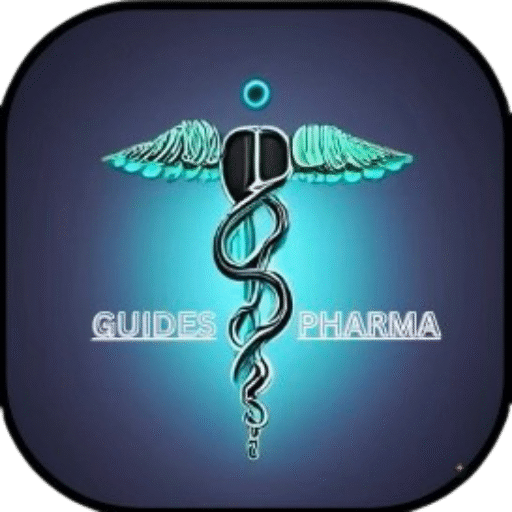Table of Contents
ToggleIntroduction to Signal Detection in Pharmacovigilance
What is Pharmacovigilance?
Pharmacovigilance, in simple terms, is the science of monitoring the safety of medicines after they have been launched in the market to ensure they are safe for public use. It involves detecting, assessing, understanding, and preventing adverse effects or any other drug-related problems.
Why is Signal Detection Important in Pharmacovigilance?
Imagine you are sailing a ship. Medicines are like ships moving through the sea of human bodies, and signal detection is your radar system, catching the warning signs of potential dangers ahead. It helps in identifying previously unknown adverse effects or changes in the frequency of known adverse effects, ensuring timely interventions to protect public health.
Brief History of Signal Detection
The thalidomide tragedy in the 1960s, where thousands of children were born with deformities due to inadequate safety monitoring, was a significant trigger for the establishment of pharmacovigilance systems worldwide, making signal detection an integral component of post-marketing drug safety.
What is Signal Detection?
Definition
Signal detection refers to the process of identifying potential safety issues with a medicine based on data collected from various sources, indicating a new or known adverse effect that may be linked to the drug.
Objectives of Signal Detection
-
Identify unknown adverse drug reactions (ADRs).
-
Monitor the frequency of known ADRs.
-
Detect risk factors for ADRs.
-
Support decision-making for risk minimization.
How Signal Detection Differs from Individual Case Safety Reports
Individual case safety reports (ICSRs) are reports of adverse effects in single patients, while signal detection analyzes patterns across many ICSRs and other data sources to find consistent safety signals requiring further investigation.
Methods of Signal Detection in Pharmacovigilance
Spontaneous Reporting Systems
These involve voluntary reporting by healthcare professionals, patients, and manufacturers to national or global databases like VigiBase (WHO) and FDA’s FAERS.
Data Mining and Statistical Methods
These methods help identify signals using algorithms to analyze large volumes of safety data systematically.
Proportional Reporting Ratio (PRR)
Compares the proportion of a specific ADR with a drug to the proportion of the same ADR with all other drugs.
Reporting Odds Ratio (ROR)
Calculates the odds of reporting a specific ADR with a particular drug versus other drugs.
Bayesian Confidence Propagation Neural Network (BCPNN)
A method using Bayesian statistics to detect signals in large datasets like VigiBase.
Empirical Bayes Geometric Mean (EBGM)
Uses empirical Bayes methods to identify signals in large spontaneous reporting databases with greater statistical confidence.
Cohort and Case-Control Studies
These studies provide additional evidence for signals detected in spontaneous reporting systems by comparing groups with and without drug exposure.
Electronic Health Record Mining
Mining EHRs can provide real-world evidence for potential signals, supplementing spontaneous reports.
Literature Monitoring
Regular review of published literature helps identify new safety signals that may not have been captured in reporting systems.
Signal Detection in Pharmacovigilance Workflow
Data Collection
Collecting data from ICSRs, literature, EHRs, and clinical studies.
Signal Identification
Applying data mining techniques and manual review to identify potential signals.
Signal Validation
Assessing if the signal is real and clinically relevant.
Signal Prioritization
Ranking signals based on risk severity and public health impact.
Signal Assessment
Detailed evaluation of the signal, including causality assessment.
Communication and Regulatory Action
If a signal is confirmed, regulatory authorities may update product labels, restrict use, or withdraw the product if necessary.
Examples of Signal Detection in Pharmacovigilance
Real-World Case Example: COX-2 Inhibitors
Increased cardiovascular risks were identified through post-marketing signal detection, leading to the withdrawal of some COX-2 inhibitors.
Example in Vaccine Safety Monitoring
Signal detection helped identify rare cases of blood clotting associated with certain COVID-19 vaccines, allowing rapid risk management strategies.
Example in Herbal Drug Surveillance
Cases of hepatotoxicity related to certain herbal supplements were identified through signal detection, leading to regulatory alerts.
Challenges in Signal Detection
Data Quality Issues
Incomplete, inconsistent, or inaccurate data can hinder effective signal detection.
Underreporting
Not all ADRs are reported, leading to delays in detecting signals.
False Positives and False Negatives
Statistical methods can generate false signals or miss true signals if not carefully interpreted.
Regulatory and Ethical Considerations
Balancing patient safety and drug availability while managing public perception is challenging.
Best Practices in Signal Detection
Robust Data Management
Ensure clean, accurate, and complete data collection.
Multi-source Data Integration
Using data from multiple sources increases the reliability of signal detection.
Regular Training for Pharmacovigilance Staff
Keeping teams updated on the latest tools and regulatory requirements improves signal detection quality.
Using Advanced Analytics and AI Tools
AI and machine learning enhance signal detection capabilities by processing large datasets efficiently.
Future Trends in Signal Detection
Role of Artificial Intelligence in Signal Detection
AI can automate and improve the accuracy of signal detection through advanced pattern recognition.
Real-time Pharmacovigilance Monitoring
Using connected health devices and EHRs can enable near real-time signal detection.
Global Collaboration for Signal Detection
International collaboration between regulatory bodies can enhance early detection and management of safety signals.
Conclusion
Signal detection in pharmacovigilance is your safety net, ensuring that the medicines you take remain safe even after approval. By using advanced methods and global collaboration, we can identify risks early and take actions to protect public health while maintaining trust in medical products.
FAQs
What is signal detection in simple terms?
Signal detection is the process of identifying potential safety issues with medicines based on data collected from different sources.
What are the methods used in signal detection?
Methods include spontaneous reporting, data mining, cohort studies, case-control studies, electronic health record mining, and literature monitoring.
Why is signal detection important in pharmacovigilance?
It helps identify unknown or increased risks of adverse effects, enabling timely action to protect public health.
Can AI help in signal detection?
Yes, AI can process large datasets efficiently, helping identify patterns and signals faster and more accurately.
What is an example of signal detection in pharmacovigilance?
Detection of cardiovascular risks with COX-2 inhibitors post-marketing, leading to the withdrawal of certain drugs, is a classic example.

